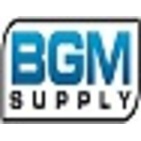Are you about to take on a plumbing project with an extra-large scope? As plumbing supply experts, we’re always happy to brainstorm with you about which supplies are most appropriate.
In the U.S., wooden water mains remained the material of choice for water distribution until the early 1900s. At this time, plumbing began to be modernized in terms of durability and flow characteristics with the advent of sand cast, cast iron water mains.
“Going Green” has many good aspects. Starting this movement in the bathroom will more than likely have a contagious effect on other rooms in the house. Green living doesn’t just mean saving money with efficiency, it also means working toward a better world using better, newer products.
Most wrenches have serrated (or grooved) faces on their clamps. To help prevent scratching the pipes, but without sacrificing its grip, place a cloth rag on the pipe and clamp the wrench to the cloth.
When it comes to your plumbing business, you want to make sure that you are consistently able to offer your customers the best products available. We offer a wide range of product lines to meet all of your project needs.
If you have an older, stationary showerhead, we can show you how to quickly install a handheld/mounted showerhead and hose to making bathing more enjoyable. These fixtures are modestly priced and can be installed in under thirty minutes.
Be sure you use the correct piping to distinguish potable water lines from waste water lines, especially if using plastic piping. Gray or black water pipes do not have the same health code requirements as potable water pipes.
Did you realize that the chrome coating on bathroom fixtures wears off eventually? If it's time to replace your fixture, consider an upgrade. Here are some popular fixture finishes: brass, brushed nickel and copper.
When working with rubber parts in toilets, keep in mind that water causes rubber to deteriorate. Compression gaskets are used to seal off water, getting wet on only one side, and take decades to break down.
Until recently, copper plumbing pipes were used in 85% of all US homes. Why? Copper piping is impermeable, long-lasting, features lead-free solder, can be quickly thawed, plus the joints don’t break down, don’t pull apart and rapidly adjust to temperature changes.
If you have young children at home, you may want to dial back your water heater to reduce the risk of scalding injuries. It takes less than a second to sustain a burn at a water temperature of 160 degrees F, and less than five seconds to burn the skin at 140 degrees F.
Have you heard of hot water heat recycling? This is the process of recovering heat from used water, primarily from sinks, showers, dishwashers, and washing machines. Heat exchanger systems can recover as much as 60% of the heat that normally goes down the drain.
If your project requires separating solids from liquids, or reducing the water content in solids, we carry an extensive of inventory of dewatering devices to meet the needs of every application, including rotary drum systems, centrifuges, or sediment tanks.
Do you know why it’s beneficial to use copper piping and fittings for your plumbing? Copper is a relatively soft metal, meaning it can bend rather easily. So, copper pipe plumbing can actually be installed using less fasteners and connectors.
Is hard water dangerous? While some people think hard water smells like rotten eggs and doesn’t taste as good as soft water, experts say it is not dangerous to drink. However, the minerals in hard water can damage pipes and appliances over time.
We are always asked if pipes come in a standard size. Today's water supply pipes are typically composed of copper or plastic coming in diameters of 3 mm, 2 cm or 2.5 cm. But, unlike plastic, the bacteriostatic nature of copper plumbing pipes keep water clean as bacteria cannot grow inside the pipe.
You probably already know that copper is a popular and convenient material for plumbing pipe. Care to guess how long it's been in use? Here's a hint: It was first used by the early Egyptians. Man has been using copper in plumbing for over 3,000 years.
Do you have any toilets in your home that were installed before the early 1990s? If so, you may consider replacing those with low-flow models in order to conserve water and lower your monthly water bill.
At one time, plumbing was a male dominated trade, but that's changing. As in many U.S. industries, female ownership is growing. Care to guess how many female owned plumbing businesses there were in the U.S. in 2013? Would be over 4,700.
What are the two main types of copper pipe? Flexible and rigid. Flexible copper pipes tend to be used in areas when water supply lines are short – whereas rigid copper pipes are used in areas where water supply lines need to be run over long distances.
Did you know that 500 years ago in England, logs were used for water distribution? Here, hollowed wooden logs were wrapped in steel banding. In the U.S., many cities used hollowed logs in the late 1700s through the 1800s.
What happens if it is stormy or overcast and your home has a solar water heater? Don't worry, because this new technology is paired with a backup water heater to ensure that your home will always have hot water when needed.
Did you know that PEX pipe (cross linked polyethylene pipe) was first manufactured in the 1920s? This type of pipe offers higher heat resistance than other type of plumbing pipe and shares the same outer diameter as copper.
What is hard water? That’s water with minerals, like calcium and magnesium. Much of our water supply comes from underground wells, and the minerals come from the rocks under the group. A water softening system can remove the harsh minerals from your home’s water supply.



